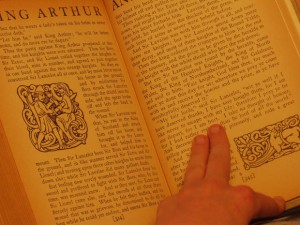Reading for Writers
 There are various reasons why reading is a worthwhile recreation, particularly if you’re a writer. Reading complements the very act of writing as an educator of how to develop your craft. Don’t think you can be a writer without reading. If you think that, you’re deluding yourself.
There are various reasons why reading is a worthwhile recreation, particularly if you’re a writer. Reading complements the very act of writing as an educator of how to develop your craft. Don’t think you can be a writer without reading. If you think that, you’re deluding yourself.
If you’re a writer, here are some reasons why you should be reading …
It teaches us punctuation
Well, how boring is that? But it does. I picked up pretty much all my knowledge of punctuation from reading. When I studied, I was taught only two additional things, (that a full stop goes inside a sentence self-contained within parentheticals, and the use of semicolons in lists containing commas). Everything else I picked up through reading over the years. It mightn’t seem important to some. Why should it? Get published, and some nifty, anonymous editor will put all the damn full stops in place. But a knowledge of punctuation helps you to understand how words can work, and how punctuation (and its use, and placement) can affect the tone of sentences.
It teaches us how sentences are put together
You might protest you know how to put sentences together and you probably do – at least in your own style. But give the same assignment to five different writers, and they’re all going to execute it differently. Some might use short, punchy sentences. Others might have a lyricism to their words. Some might be languorous, developing mood and setting. There’s no limit to the alternatives and it’s instructive to see how different writers construct their prose.
It teaches us about characterisation/setting and description
How do you describe characters? Do you perform an information dump, unloading paragraphs of descriptions once a character is introduced? Or do you seed in the information gradually? Are your descriptions straightforward? Or do you use similes? With a character’s history, do you digress to relay their backstory and how they got to this point in the story? Or do you offer it piecemeal, or trigger it only when the character has some correlation to that bit of history, e.g. when your character picks up a picture from the mantel?
How about setting? Do you handle that similarly to characters? Are their sprawling, Tolkienesque descriptions? Or are they short and sweet? Do you find neat little twists on how to describe things, like Cormac McCarthy? Or are their rich but evocative little details, like Inga Simpson? Look at how different authors describe characters and settings and think about how you do it.
It teaches us about structure
Are your stories purely chronological? Do you intersperse them with intermissions, like Stephen King’s IT? Does you story run in reverse, as occurs with Martin Amis’s Time’s Arrow, where the lead character gets younger and younger as the novel progresses? Is the chronology disjointed, like Kurt Vonnegut’s Slaughterhouse Five? These are just a handful of examples, but there is no limit to the way a story can be presented.
It teaches us about pacing, plotting, and sub-plotting
This might seem silly, but it’s interesting to see the way different authors handle the pacing of their books. In Julian Barnes’s The Sense of Ending, the first half of the book is dedicated to protagonist Tony Webster when he is in secondary school. In the space of a couple of pages, Barnes advances the protagonist to the point of a retiree, and the second half of a book is spent with the protagonist trying to puzzle out a mystery regarding one of his schoolmates. JD Salinger’s The Catcher in the Rye all takes place over several days. Tim Winton’s Cloudstreet unfolds over decades. How do you deal with time?
What about plot? Do you have a proclivity to axis the story around one plot, with all the characters revolving around it? Or are their subplots unrelated to the main plot? All the characters in The Sense of Ending exist to serve the protagonist. In The Catcher of the Rye, everything revolves around Holden Caufield. But take something like JRR Tolkien’s The Lord of the Rings, and whilst ultimately every character is dedicated in the fight against Sauron, they all have their own arcs – Frodo and Sam are attempting to destroy the Ring, Merry serves King Theoden, Pippin serves Lord Denethor, Aragorn is attempting to become a king … and that’s just a smattering of what occurs. In George Martin’s Game of Thrones series, there are numerous characters whose threads evolve disparately.
These examples could go on, and it might seem all that’s happening is a listing of techniques that can be drawn from other books. But this is the point: reading can teach you some amazing things. You don’t have to dissect a book, or analyse how it’s constructed. Just through reading we absorb that information.
Sitting down and writing and writing and writing is a great educator in itself. We hone our skills and get to experiment, find out what works for us and what doesn’t, where our strengths lay and where they don’t, et al, but through reading, we open our minds to possibilities we might not have otherwise considered.
And it can be a lot of fun, too. But more on that next week.
LZ.
